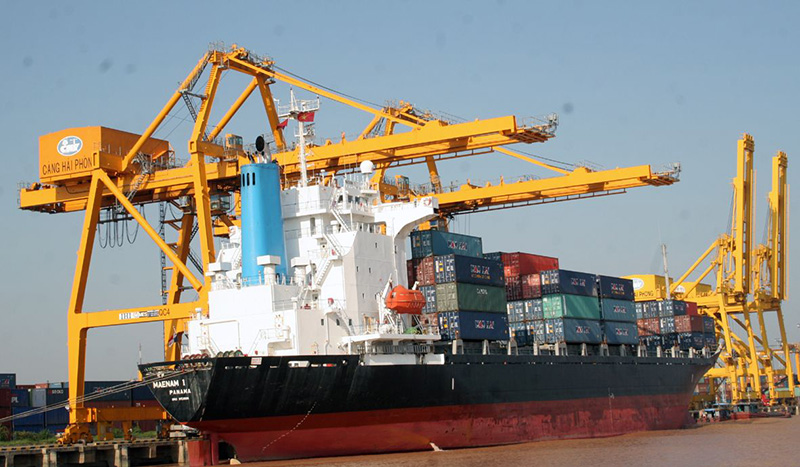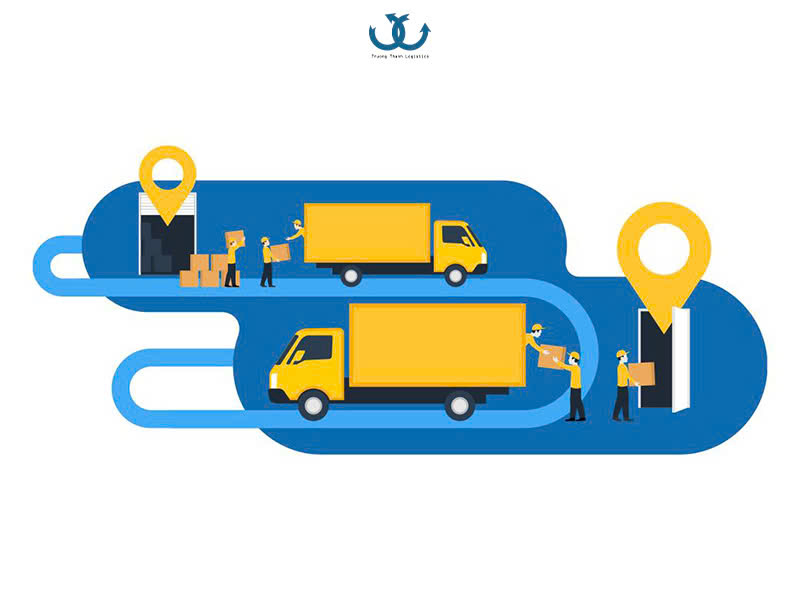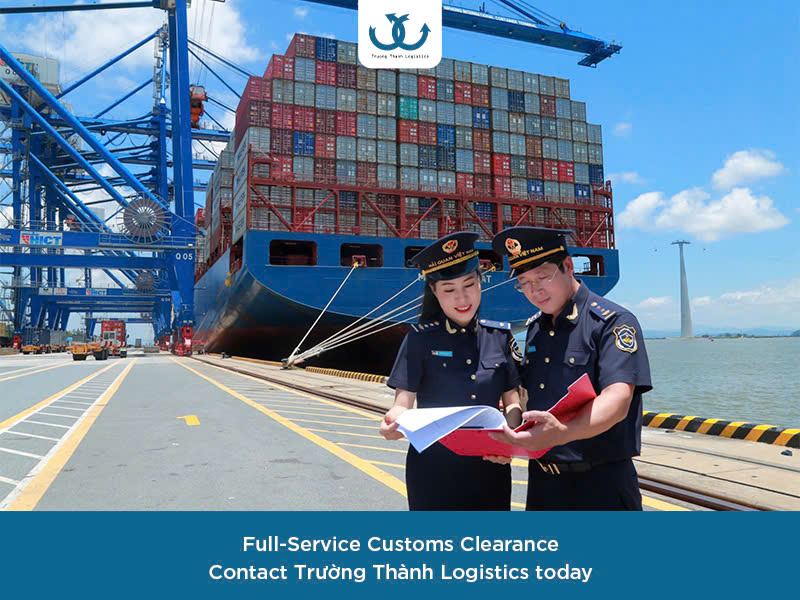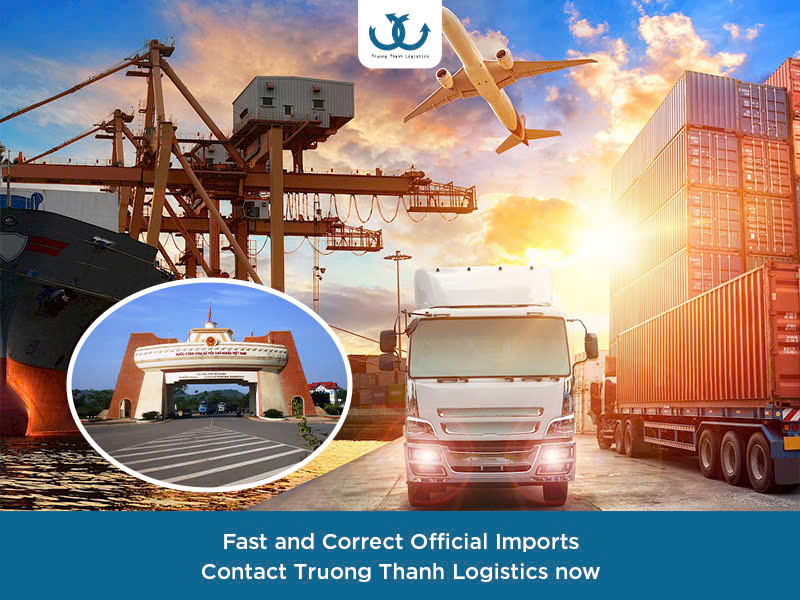Air freight is an ideal choice for ensuring fast and efficient global delivery.
However, specialized terms like AWB, Chargeable Weight, and Dangerous Goods can be confusing if you’re not familiar with them. Are you looking to understand the meaning and role of these concepts to optimize your logistics process? Let’s explore the essential terms in air transport for smoother and more professional cargo shipping!
Common Terms in Air Freight
1. Air Waybill (AWB)
The Air Waybill (AWB) is the core document in air freight. The AWB serves two main functions:
+ Receipt of Goods: Confirms that the goods have been handed over to the airline or freight forwarder.
+ Contract of Carriage: Details the terms and conditions between the shipper and the carrier, facilitating shipment tracking.
The AWB is a legal proof, ensuring transparency and aiding in effective shipment management.
2. Chargeable Weight
Chargeable Weight is the factor determining shipping costs, taking the greater value between the actual weight (gross weight) and the volumetric weight. Volumetric weight is based on the shipment’s dimensions, helping airlines optimize cargo hold space.
Example: Light but bulky goods will have a high volumetric weight, increasing costs. Optimal packaging is an effective way to reduce Chargeable Weight.

3. HAWB (House Air Waybill)
The HAWB is a waybill issued by a freight forwarder, different from the MAWB (Master Air Waybill issued by the airline). The HAWB contains detailed information about the shipper, consignee, goods description, weight, quantity, and shipping conditions. It’s a transaction document between the shipper and the freight forwarder, ensuring transparency in the process.
4. Freight Forwarder
A Freight Forwarder is an intermediary that coordinates the cargo transportation process. They advise on shipping options, handle documentation, customs clearance, manage warehousing, and coordinate delivery. Freight forwarders help optimize costs, time, and ensure goods reach their destination safely.
5. IATA (International Air Transport Association)
IATA (International Air Transport Association) is a global organization that sets standards and regulations for air transport. IATA manages airport codes, airline codes, safety regulations, and aviation security, helping carriers optimize processes, reduce costs, and improve efficiency.
6. Manifest
A Manifest is a document that lists detailed information about all shipments on a flight, including the description of goods, quantity, weight, volume, and shipper/consignee information. The manifest helps customs, carriers, and consignees track and control shipments, ensuring a smooth customs clearance process.
7. Unit Load Device (ULD)
A ULD is a specialized container or pallet used to hold cargo on aircraft. ULDs protect goods from damage and impact, and help airlines manage shipments easily. They are designed with dimensions suitable for different aircraft types, ensuring safety and efficiency.
8. Consignee
The Consignee is the party designated to receive the goods, responsible for customs declaration, payment of fees, and inspection of the shipment. The consignee has the right to file claims if the goods encounter problems, ensuring their rights in the transport transaction.
9. Shipper
The Shipper is the party that prepares and sends the goods, providing documents such as the waybill, commercial invoice, and packing list. The shipper coordinates with the freight forwarder or carrier to plan suitable transportation, ensuring the shipment is handled according to the correct procedures.
10. Handling Fee
A Handling Fee is a charge for services such as loading, unloading, inspection, repackaging, and cargo management. This is a surcharge to compensate for the work involved in receiving and processing the shipment, and should be clearly calculated to avoid surcharges.
11. ETD (Estimated Time of Departure)
ETD is the estimated time the flight will depart, helping all parties plan for customs procedures, loading, and delivery. Note that ETD is a forecast and may change depending on actual circumstances.
12. DIM Weight (Dimensional Weight)
DIM Weight is calculated based on the shipment’s dimensions:
DIM Weight=DIM Factor (usually 5000 or 6000)Length×Width×Height
The greater value between the DIM Weight and the actual weight is used to calculate freight charges, especially for bulky goods.
13. Dangerous Goods (DG)
Dangerous Goods are items such as chemicals, explosives, or toxic substances that require strict compliance with IATA regulations. The transportation of DG requires special handling to ensure the safety of health, property, and the environment.
14. Perishable Cargo
Perishable Cargo (food, pharmaceuticals) needs to be stored at low temperatures or in special conditions to prevent spoilage. The transportation process requires cold storage and specialized equipment to maintain quality.
15. Transit Time
Transit Time is the period from the point of origin to the destination. Understanding Transit Time helps all parties plan for accurate cargo receipt and delivery, avoiding delays.
Other Important Terms
Some less common but still important terms in air freight include:
+ Backhaul: Transporting goods on a return flight to utilize empty space and reduce costs.
+ Main Deck: The main cargo deck on an aircraft for large, heavy goods.
+ Courier/Express Cargo: Fast delivery service for parcels or goods requiring urgent customs clearance.
+ Cut-off Time: The latest time to submit goods to catch a flight.
+ FOB (Free on Board): The seller bears the cost of getting the goods onto the aircraft; the buyer bears subsequent costs.
+ Demurrage: Storage fees if goods are not picked up on time at the airport.
Why is Understanding Air Freight Terms Important?
Mastering these terms offers several practical benefits:
+ Clear Process Understanding: From documentation and customs clearance to delivery, avoiding errors.
+ Effective Communication: Accurately conveying requirements to partners, reducing misunderstandings.
+ Cost Optimization: Differentiating services, calculating freight charges correctly, avoiding surcharges.
+ Legal Compliance: Ensuring goods are transported legally, avoiding penalties or detention.
+ Optimal Planning: Predicting time and costs, ensuring timely delivery.
Professional Air Freight Services – Contact Truong Thanh Logistics Now

Truong Thanh Logistics is proud to be one of the leading logistics companies in Vietnam for international freight forwarding. With our air freight services, we provide comprehensive logistics solutions, from transportation consulting and document processing to customs clearance and more.
Our team of experienced experts, a wide network of international partners, and a commitment to safety, cost-effectiveness, and punctuality have made Truong Thanh Logistics the trusted choice of thousands of businesses. Let us help you transport your goods efficiently and professionally!
Understanding terminology is the first step to successful air freight! Contact Truong Thanh Logistics now for free consultation and optimal logistics solutions.
For more information on import-export procedures as well as other services such as import-export entrustment and sea freight, please contact Truong Thanh Logistics immediately at:
For assistance with import and export information, international freight, sea transport or import entrustment, please contact Truong Thanh Logistics at the address:
Truong Thanh Logistics – Dedication, Prestige
Hotline: 0915 36 38 39
Headquarter: 26th Floor, Tower A, Song Da Building, Pham Hung, Nam Tu Liem, Hanoi.
Email: sale@truongthanhjsc.com
info@truongthanhlogistics.com
Website: www.truongthanhlogistics.com
Hai Phong Branch
Address: R.A11, TTC Building, 630 Le Thanh Tong, Hai An, Hai Phong
Da Nang Branch
Address: 27 Nguyen Ba Lan, My An Ward, Ngu Hanh Son District, Da Nang.
HCMC Branch
Address: Room 41, 4th floor, Casanova building, 85 Nguyen Son street, Phu Thanh ward, Tan Phu district, Ho Chi Minh City











